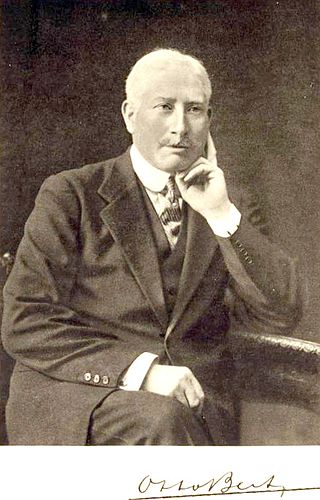This article needs additional citations for verification .(February 2024) |
This is a list of people elected Fellow of the Royal Society in 1945. This includes the first two female fellows: Kathleen Lonsdale and Marjory Stephenson. [1]
This article needs additional citations for verification .(February 2024) |
This is a list of people elected Fellow of the Royal Society in 1945. This includes the first two female fellows: Kathleen Lonsdale and Marjory Stephenson. [1]

William Lowther, 2nd Earl of Lonsdale, PC, FRS, styled Viscount Lowther between 1807 and 1844, was a British Tory politician.

Earl of Lonsdale is a title that has been created twice in British history, firstly in the Peerage of Great Britain in 1784, and then in the Peerage of the United Kingdom in 1807, both times for members of the Lowther family.

John Lowther, 1st Viscount Lonsdale, PC FRS, known as Sir John Lowther, 2nd Baronet, from 1675 to 1696, was an English politician.

The year 1945 in science and technology involved some significant events, listed below.

Dame Kathleen Lonsdale was an Irish crystallographer, pacifist, and prison reform activist. She proved, in 1929, that the benzene ring is flat by using X-ray diffraction methods to elucidate the structure of hexamethylbenzene. She was the first to use Fourier spectral methods while solving the structure of hexachlorobenzene in 1931. During her career she attained several firsts for female scientists, including being one of the first two women elected a Fellow of the Royal Society (FRS) in 1945, first female professor at University College London, first woman president of the International Union of Crystallography, and first woman president of the British Association for the Advancement of Science.

There have been seven baronetcies created for members of the Lowther family, one in the Baronetage of Nova Scotia, two in the Baronetage of England, two in the Baronetage of Great Britain and two in the Baronetage of the United Kingdom. Two of the creations are extant as of 2008.
The Microbiology Society is a learned society based in the United Kingdom with a worldwide membership based in universities, industry, hospitals, research institutes and schools. It is the largest learned microbiological society in Europe. Interests of its members include basic and applied aspects of viruses, prions, bacteria, rickettsiae, mycoplasma, fungi, algae and protozoa, and all other aspects of microbiology. Its headquarters is at 14–16 Meredith Street, London. The Society's current president is Prof. Gurdyal S. Besra. The Society is a member of the Science Council.
This is a list of people who have served as Lord-Lieutenant of Westmorland. The office was abolished on 31 March 1974 and replaced by the Lord Lieutenant of Cumbria. From 1751 to 1974, all Lord Lieutenants were also Custos Rotulorum of Westmorland.

Marjory Stephenson was a British biochemist. In 1945, she was one of the first two women elected a Fellow of the Royal Society, the other being Kathleen Lonsdale.

Sir Christopher Howard Andrewes was a British virologist who discovered the human influenza A virus in 1933.

William Lowther, 1st Earl of Lonsdale, KG, also known as Sir William Lowther, 2nd Baronet, of Little Preston, from 1788 to 1802, and William Lowther, 2nd Viscount Lowther, from 1802 to 1807, was a British Tory politician and nobleman known for building Lowther Castle.
James Hugh William Lowther, 7th Earl of Lonsdale, was a British peer.
Valentines High School is a coeducational secondary school and sixth form located in the Ilford area of the London Borough of Redbridge, England. It has approximately 1300 pupils and 93 teachers. Valentines has been a teaching school since 2011, and is a member of the Leading Edge partnership programme. In 2006, it was designated as a specialist school for technology and had technology college status.
The Marjory Stephenson Prize is the principal prize of the Microbiology Society, awarded for an outstanding contribution of current importance in microbiology.

Muriel Robertson, FRSTM, F.I.Biol was a Scottish protozoologist and bacteriologist at the Lister Institute, London from 1915 to 1961. She made key discoveries of the life cycle of trypanosomes. She was one of the founding members of the Society for Microbiology, along with Alexander Fleming and Marjory Stephenson.

The Beit Memorial Medical Fellowships were one of the most prestigious and competitive fellowships for post-doctoral or medical degree research in medicine in the United Kingdom. The Fellowships were founded in 1909 by Sir Otto Beit, a German-born British financier, philanthropist and art connoisseur, in memory of his brother Alfred Beit.
Edward Knubley was a British Member of Parliament, one of "Lord Lonsdale's ninepins". A client of Sir James Lowther, 5th Baronet, he was twice returned as member for Carlisle through Lonsdale's influence, only to have his election overturned on petition each time. He held local office and rank in northwestern England through Lonsdale's influence.